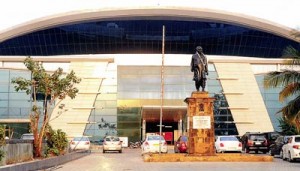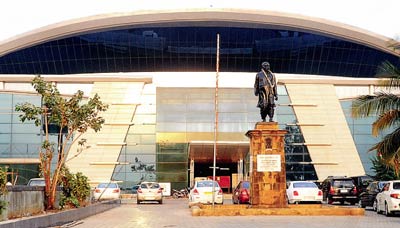1st of a series of expose
By: Saumit Singh
 Seven years ago, the managing committee of the National Sports Club of India (NSCI) suddenly started breaking down the existing Vallabhbhai Patel Stadium to start building–what they led everyone to believe–would be Mumbai’s first international Olympic size indoor stadium. The project was conceived in 2003 to be worth around Rs 40 crore and scheduled to be completed in 18 months. Seven years and Rs 200 crore later, it still isn’t functional, but the superstructure is ready. All this while, the NSCI managing committee has been plagued by allegations of corruption, mismanagement, embezzlement of funds and irregularities in the tendering process, and the matter ended up in the High Court in 2007. In 2008, the court pronounced its judgement and appointed an administrator, retired Supreme Court judge BP Singh, to stem the infighting and oversee the speedy completion of the pending project.
Seven years ago, the managing committee of the National Sports Club of India (NSCI) suddenly started breaking down the existing Vallabhbhai Patel Stadium to start building–what they led everyone to believe–would be Mumbai’s first international Olympic size indoor stadium. The project was conceived in 2003 to be worth around Rs 40 crore and scheduled to be completed in 18 months. Seven years and Rs 200 crore later, it still isn’t functional, but the superstructure is ready. All this while, the NSCI managing committee has been plagued by allegations of corruption, mismanagement, embezzlement of funds and irregularities in the tendering process, and the matter ended up in the High Court in 2007. In 2008, the court pronounced its judgement and appointed an administrator, retired Supreme Court judge BP Singh, to stem the infighting and oversee the speedy completion of the pending project.
Since the matter brought to the High Court involved corruption in executing the project, BP Singh’s brief was to speedily get the work finished and verify that past and future bills were raised according contracted rates before clearing them. But the legality of the project itself was neither part of the High Court case nor within the purview of the special administrator appointed by the court. BP Singh’s brief was only concerned with the early completion of the project and signing bills. “The work is around 90 percent complete,” said Jaisingh Choraria, the regional secretary of NSCI. “There is still a little work to be done and then we’ll deal with the interiors. We are hoping that at least the main arena of the stadium can be completed soon, but I cannot commit if the stadium project will be completely ready even by January 2012.”
While the members had been at war over the delay and cost overruns of the project, not to mention specific allegations about overpricing of almost every item in the civil work, but documents procured under RTI show that the entire indoor stadium project is coming up in complete violation of all norms and rules.In fact, if the revenue generation projections prepared by the NSCI from the indoor stadium are to be believed, the indoor stadium seems to be an air-conditioned mall cum amphitheatre cleverly disguised as a stadium.The design basis report prepared by project architect Shashi Prabhu and Associates for the NSCI envisages that the concretised central arena will be rented out for corporate functions and events while the surrounding halls will be house Italian, Japanese, Chinese and Thai eateries, shops, health clubs, banquet halls, consumer stores and salons. The plan also includes getting various popular fast food vendors to sell burgers, ice-creams, pizzas, chaat, coffee and juice in the corridor between the central arena and the halls.
Meanwhile, a 3.5 lakh square feet basement car park to accommodate around 800 vehicles is already functional on what was fertile land earmarked as a green zone (no development zone) reserved for an open air stadium to play football, hockey and other games. The area itself falls under the stringent Coastal regulation Zone II where any construction above Rs 5 crore – even if permitted – needs MoEF clearance.
To compound matters, even the lease agreement signed between the BMC and NSCI specifically stipulates that the stadium was meant for sports like football and hockey and the velodrome for racing events. There was no provision for any change in usage or FSI. Creating a double storey indoor stadium for just tennis and badminton negates both conditions.
The sheer audacity of what is clearly a land grab of sea-facing Worli property leased out by the BMC for sporting activities to NSCI has not dawned even on the members who’ve seen the indoor stadium project coming up before their very eyes for seven years, all along believing it to be an enhanced club house with international quality sports equipments for their use.





